Welcome to A Wild Green Heart. Thank you for joining me for another of my monthly photo-diary reports from Pomona.
It's something a little different this time, because February marked a new stage in my relationship with this wild and sacred place. As many of you may know, last year I wove my first solo art show - “Becoming Pomona” - from the devastation and subsequent regrowth of Pomona. I brought a combination of photos, poetry and spoken word to an audience of friends, to celebrate my fiftieth birthday. This January I was honoured to make a second iteration of this exhibition - with additional images and a twenty five minute audio accompaniment - to a wider audience as part of a larger gathering.
From Becoming Pomona (ii) Jan 2025
As January drew to a close, a couple of strands of thought came together, which have led me to begin a new line of enquiry with Pomona.
The first of these strands is the culmination of a thoroughly brilliant online course I've been participating in since last April, “Permaculture Design for Creatives” (PDC). You can find out much more about this course, and other offerings from our teacher, Liz Postlethwaite, over on her Substack and her website. Liz has a number of new courses open to sign up for right now!
Taking part in this PDC has helped me to join some things together in my mind, and has served to fill in some significant gaps in my learning.
In order to complete the course, participants are required to complete a design project, using a permaculture framework and tools. More on what all this involves shortly. I wrestled for some time about what to create a design around. Unlike the rest of my peers on this year's PDC I'm not working or studying, but I wanted to make the design useful for my life. So I began wondering about how it might be applicable to my dance with Pomona.
The second thread was the growing sense that there are still so many layers of Pomona to be discovered, so much of her that I do not know, and that deserves not only to be encountered, but also shared with the world through some kind of creative expression. So the question, “How do you want me to express you to others next?” has been growing in my heart for a while.
These two, initially separate strands of thought came together, and formed the idea of creating a design project around the question I have for Pomona. Here's the gloriously quirky and hugely intelligent Annie Dillard talking about ideas in her essay “Life on the Rocks: The Galápagos”
Like flatworms, like languages, ideas evolve. And they evolve, as Arthur Koestler suggests, not from hardened final forms, but from the softest plasmic terms in a cell's heart, in the nub of a word's root, in the supple flex of an open mind.
This feels like exactly the kind of hidden, emergent space my PDC design idea has come from. With the project due to be completed in March, and the second iteration of Becoming Pomona still fresh in my body, Imbolc seemed the perfect time to bring this new question to Pomona, because as Ian Siddons Heginworth writes in “Environmental Arts Therapy and the Tree of Life”
Meaning “in the belly”, Imbolc marks the first stirring of life in the womb of the earth.
Before I get any deeper into my February times with Pomona, here's just a little more about permaculture design, about which I could say much, but for now I want to keep it as simple as possible. The following is taken from this post on Liz's Substack, “Mud and Culture.”
At its heart sit three provocations:
How can we design things in a way that thinks about systems and wholes?
How can take inspiration from the natural world that we are part of to create the things that we need to live our lives?
How can we ground this creation in the ethics of: earth care, people care and future care / fair share?
Systems thinking, working closely with the natural world, and the brief but all-encompassing permaculture ethics all fit nicely within my way of interacting with the world, yet remain deeply challenging. It's good, solid ground on which to create a design. Next I needed a design framework.
Approaches that set out a fixed path of enquiry make literally no sense to me, in an ever-changing and unpredictable life in an ever-changing and uncontrollable world! So, for my design framework I chose Looby Macnamara’s “Design Web”. It seemed the obvious choice, given that I struggle a great deal with prescriptive methodologies. Both my practice and my life these days are so emergent and responsive to what happens in front of me, and the web gives space for that.
My rendering of the design web
The beauty of the design web, although it outlines the usual stages of creating a design - Survey, Analysis, Design and Reflection - is that it is deliberately non-linear. Which is a good job, because I knew exactly where I wanted to start: in the reflection space - which in many frameworks is prescribed for the evaluation stage of a project - and specifically with appreciation!
I made three visits to Pomona around the time of Imbolc, to prepare the way for my PDC design project. On the first of these, I created an Appreciation Ritual, to show gratitude to Pomona for all the ways she has taught me, loved me, guided me and held me over the last four years. I bought the best bouquet of Fairtrade1 roses I could find, poured a flask of the finest malt whisky in my possession, and gathered stocks of bird seed.
At my Ancestral Grounds - the place I always visit first, to consciously re-member my connection with my ancestors, and with all creaturely kin - I laid the first of the roses around my ritual circle. I lit the candle, poured whisky to leave in the circle, made prayers, and blessed my feathered kin with handfuls of seed.
Whenever I'm at Pomona, I carry with me in my body various pieces of wisdom from teachers, especially indigenous ones. These words, from Robin Wall Kimmerer are often close to the surface:
Other beings can fly, see at night, rip open trees with their claws, make maple syrup. What can humans do? We may not have wings or leaves, but we humans do have words. Language is our gift and our responsibility. I've come to think of writing as an act of reciprocity with the living land.”
from “Braiding Sweetgrass”
Thus it felt important to weave some new words during this visit. Here are some of the ones that emerged while in the Ancestral Grounds:
In remembering you I remember myself In remembering myself I remember you In remembering all my kin I remember myself In remembering myself I remember all my kin In remembering my ancestors I remember myself In remembering myself I remember my ancestors
Next, I stated my usual intentions for visiting Pomona; then I let her know that I had a new line of enquiry, before uttering my question: “How do you want me to express you to others next?” The wording is important, because I want to make it crystal clear that I consider this design a completely co-created venture. I cannot and will not make art that I don't feel has come first from Pomona, then through me. This was my primary reason for starting with appreciation, for all that Pomona has already shared to, and through me.
My next destination was the Heart of Pomona. Here I laid a circle of nine roses, in which to stand, to offer libations, and craft more words for her. These were to give thanks, and to open myself up to the ways she may wish to communicate. Here is a fragment of what I said:
In the shadow of so much mechanised destruction done by humans to land I seek to honour the ancient indigenous, ancestral relationship between humans and land.
Then I moved on to Magic Pool, site of the deepest wonders I've encountered at Pomona. It's a place of so many emotions, so many memories, so many encounters. I left offerings of seed for the birds and whisky for the waters. Here my words were full of deep and genuine gratitude. These are just some of them:
Pomona You have been faithful to me You have transformed so many situations Gifted me so much joy Granted me so much comfort Revealed so many mysteries Answered so many prayers. I come today with a heart full of gratitude!
Swans on Magic Pool
My final destination on this first day was the Womb of Pomona. This is a deeply sacred place that has not given up many secrets to me, and about which I have not written very much. But I cannot deny its power to hold and birth new life, making it a necessary destination for Imbolc! The Womb is densely tangled with brambles and sea buckthorn, and feels appropriately difficult to enter. Here I laid the final roses, offered the last of the whisky and seed, and said my final words of appreciation.
Thank you for your sacred wildness All across your body In your waters In the sky above In the earth beneath. Thank you for your sacred wildness in me in my body in my relationships in my art and practice in the ground of my being.
The next day I returned with one simple agenda. I felt compelled to make a St. Brigid's cross from the spreading rushes that grow all across the middle of Pomona, where the marshes form in wetter months - as seen in the foreground here. Brigid is the ancient goddess and Celtic saint associated with the celebration of Imbolc.
As you can see, the marshes have greatly receded this month - in fact, by mid February they'd completely dried up, as you can see here:
I spent a long time walking slowly around the marshes, seeking out the best and tallest rushes. I took only a couple of stems from any one plant, avoiding any that had already formed a seed head, and thanking them for their gift. When I had enough for the cross, plus a couple of spares just in case, I went home and wove it. As you can see, it's a wonderfully imperfect first effort: but Good Enough!
Before my next visit to Pomona, I used another, simple tool to reflect on my relationship with Pomona for the last four years. The tool is called “I like, I wish, I wonder” and is fairly self-explanatory. It helped me to deepen into my appreciation, while also tapping into my yearning for more in the future:
PDC design project step 2 - reflection
I made my third visit to Pomona a couple of days later, with the specific intention of laying the St. Brigid's cross in the circle of roses at the Heart of Pomona. I aligned the points of the cross with the four directions. I'm glad I used a compass, because my notion of where north lay wasn't entirely accurate!
As part of my ritual time, I asked my question again: “Pomona, how do you wish to express yourself to the world through me next?” I also asked for the Imaginal eye of my heart to be open. To see things with new eyes, new wonder.
I then spent some time wandering the edges of Pomona, using part of Starhawk’s survey tool “Nine Ways of Observing”. This is probably my favourite permaculture tool so far, as it aligns quite closely with much of my existing practice at Pomona, but also brings additional questions and new perspectives that I find more challenging.
Image credit: Liz Postlethwaite, smallthings.org.uk
I used my wander to focus specifically on “observing edges.” Starhawk further clarifies this as noticing:
• Where does one system meet another?
• How does the edge differ from the centre? One of the reasons I love Pomona so much is her evident status as an “edge place” - somewhere near the heart of the city that is not at all like the city. Somewhere surrounded by development that still retains wildness. Somewhere overlooked by bustling trams and close to an arterial road, but so rarely visited.
She is also an edge place composed of edges: one side boundaried by the River Irwell, the other by the Bridgewater Canal. In permaculture thinking, edges are interesting places, because where two ecosystems meet is the greatest variety and abundance of life. At Pomona’s narrowest parts, there is a meeting of multiple edges within a hundred meters or so. Towpath meets canal; canal meets Pomona; Pomona meets the river; the river meets the path and the developing edge of Salford on the far side.
One curious feature of Pomona is that all these edges are human constructions. The canal was created by people, the river wall is made of concrete, a legacy from the time Pomona was a working dock a century or so ago. And yet, despite - or arguably because of - these human interventions, these edges are teeming with life.
Gulls, cormorants, crows, magpies and herons perch atop the many lamps that are dotted along the river wall, and on the railings that line it.
Heron on lamp, January 2024
Ducks and geese often land on the river wall itself, as do pigeons. The geese make nests on the other edge, where Pomona meets the canal. Pomona’s colony of sand martins make their nests in the cracks of the river wall itself, where the two layers of concrete meet. And my favourite bird of all, kingfisher, uses the wall, the old ladders and the trees around the edge of magic pool (which is a half-filled-in dock) to keep an eye on the water, and to dive for food.
The edge of magic pool is a curious place, as so much human litter and detritus washes up there. But it is also used by water birds for nesting, especially the moorhens, who have raised chicks there every year that I've been visiting.
And the ever-changing island of silt and sand in the middle of the pool, which itself forms yet another edge, is by far the busiest place when it comes to water birds. Gulls crowd the water there, screeching and scrapping for food. Ducks, geese and swans preen and slumber there. Cormorants stand on the half submerged logs, wheelbarrow and old fridge to dry out their wings between fishing trips. Heron, egret and kingfisher hunt for fish. Moorhen hides in the scrub, occasionally dashing across the island, while wagtails bob up and down along its edge. And at times, visiting birds appear there too - I have seen little ringed plovers, redshanks, and even oystercatchers while sitting there over the years.
An easy conclusion to make is that life thrives at the edges, compared to the centre: something that can be observed in human society as much as in the wild.
Magic Pool looking magical, Feb 2025
All of this simply underlines what is blatantly obvious when spending time at Pomona. The lives of humans and of the rest of the natural world are intimately intertwined. And even when most of us have abandoned our custodial relationship with the more-than-human world, other creatures will still adapt and make use of the things we’ve created for our own purposes, and then abandoned, to suit their needs.
Perhaps it was with this somewhere in the back of my mind that I chose my next permaculture tool - one that, on the surface, seems to be the most human-centric of all: the “client interview”. This tool is exactly what it sounds like - a conversation with the client commissioning a piece of work, to find out more specifically what they want from a particular project or design.
Because my project revolves entirely around my belief that the whole of Earth, through all her manifold beings, is constantly communicating with us, it felt apt to spend some time wandering around Pomona, asking her for more clarity about exactly what she's wanting to express through me.
I'm not going to divulge the details of that conversation - at least not yet - but suffice to say I had an amazing time, being led around Pomona, visiting various portals. Some of these were obvious, others less so. For example, I often visit this uncovered access point of the Corn Brook, a tributary of the Irwell, which flows beneath Pomona:
I like to bless the water as it makes its way into the Irwell. But I had not previously viewed this hole as a portal. This was one of seven I visited that day, all of which required their own words and activities, many of them related to keeping them open or keeping them closed. Indeed, portal guardianship seems to be a strong new thread of my Pomona activities.
I'm still in the thick of my design project, and I'm far from drawing any conclusions about how I might express Pomona to the world next, though I've received some information that will direct my next steps. But I'm aware I've talked at length about all this, and some of you come here for the photos and to hear about my encounters with the natural world. So I'll stop talking about my design project for now, and I'll leave you with a couple of final February noticings and few more shots from Pomona.
Firstly, early in February, the quality of light changes noticeably as we slowly begin to emerge from the winter months. The temperature has been cold this month, and the wind fiercely so at times. But the light, oh the light…
Geese over Pomona
I often recreate this shot, taken beneath the tramway, when the light is good
Light and water creating magnificent patterns beneath the tram tracks
Fresh paint by the lock, admired by a pair of geese
Finally, a word about the snipe. Having not seen a single snipe since mid-January, and with the marshes having all dried up, I had concluded they had all migrated back north to colder climes last month. But on 18th February, while walking the recently-marshland area, I startled three pigeons from the undergrowth. This caused me to say aloud, “Oh! Pigeons resting, where once there were snipe!” And, as if it were an invocation, the moment I announced his name, a solitary common snipe burst from the undergrowth and flew off, zig-zagging high over Pomona and away across the river. A beautiful moment to finish with for today.
I hope you'll keep following my meanderings at Pomona. I'll be reporting back again in a month's time to let you know how March unfolded there.
As always, thank you for reading or listening and please, say hello in the comments!
Bearing in mind the permaculture ethics - earth care, people care and fair share!


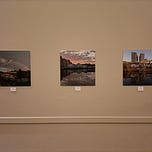


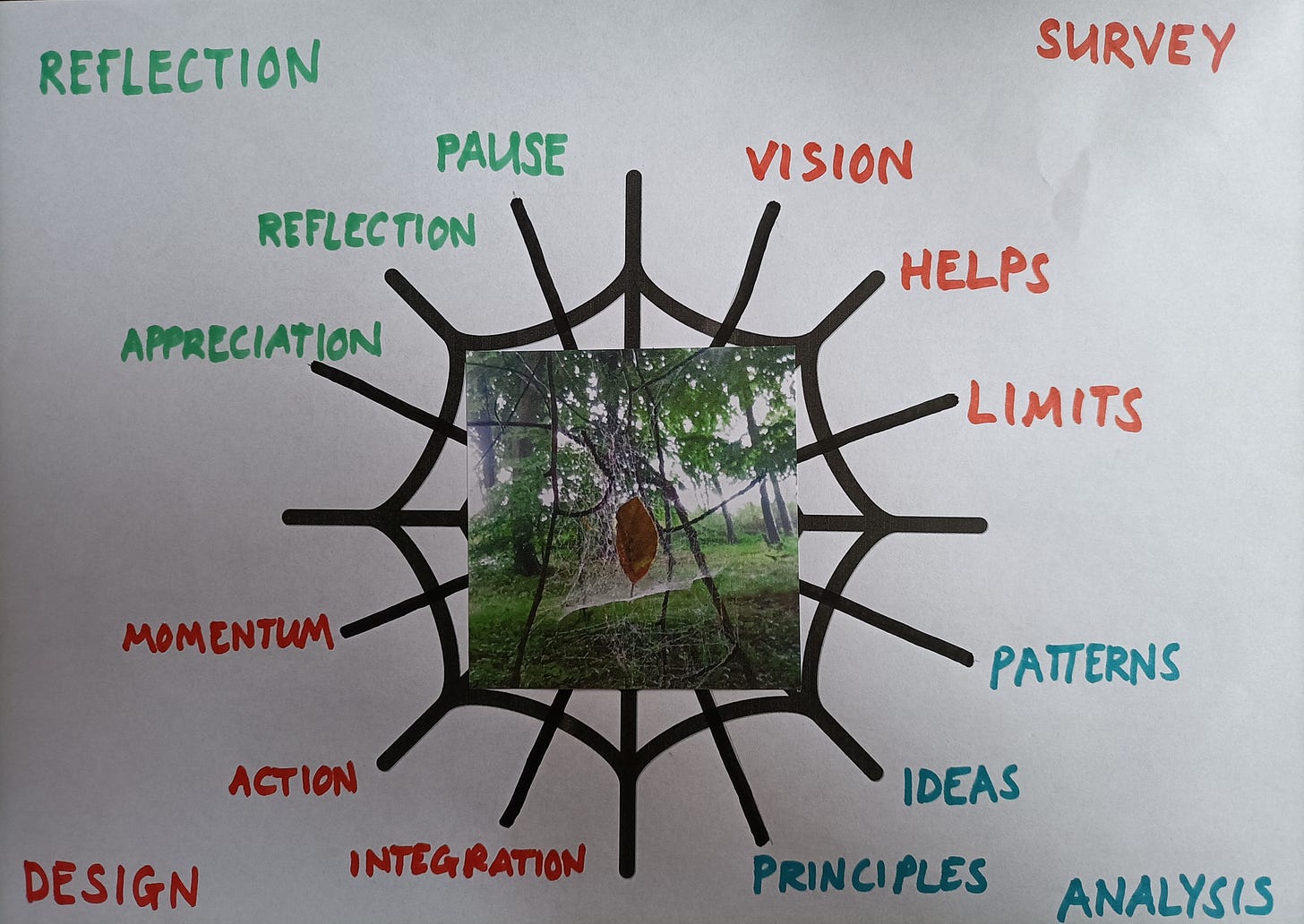
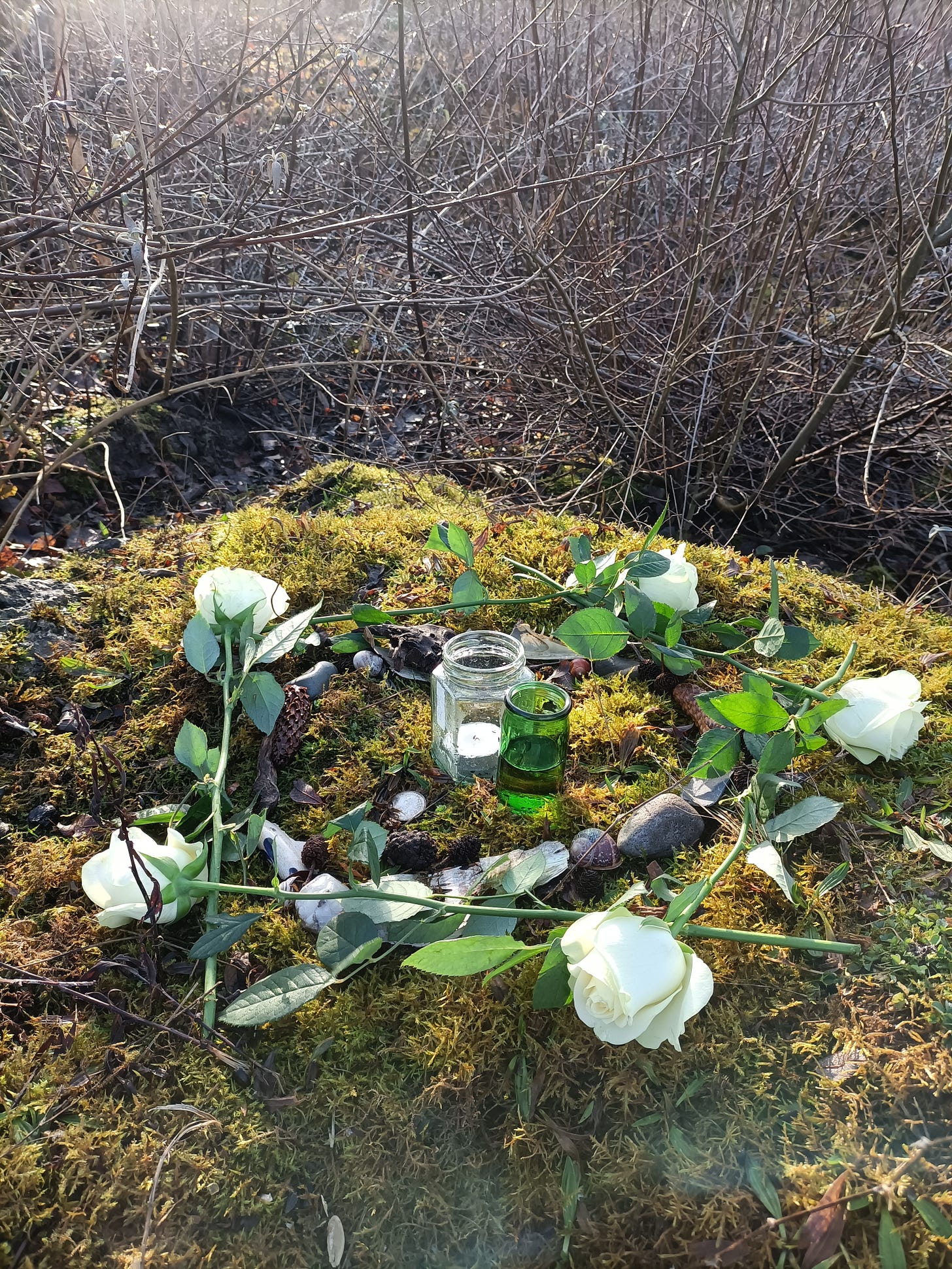
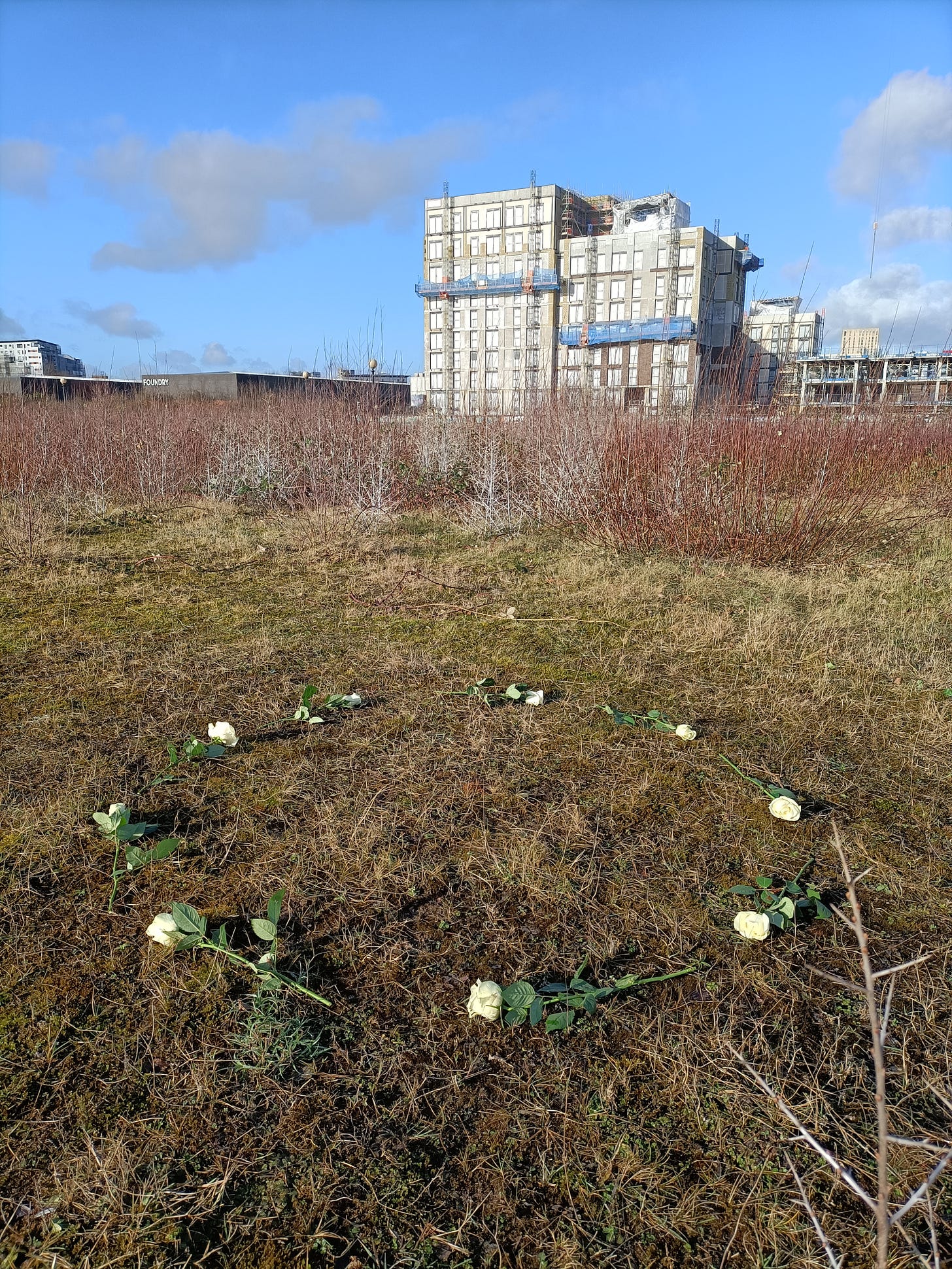
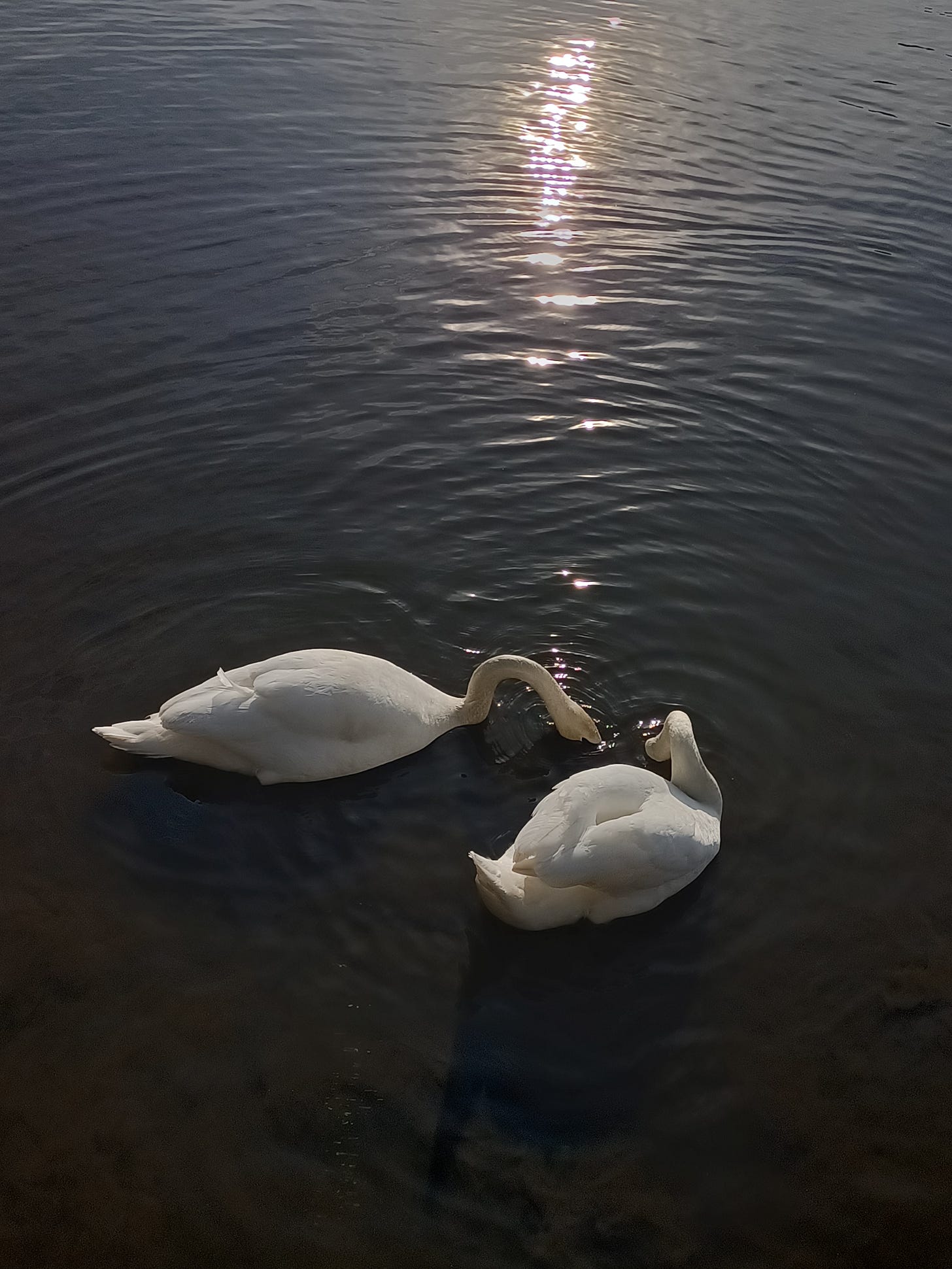
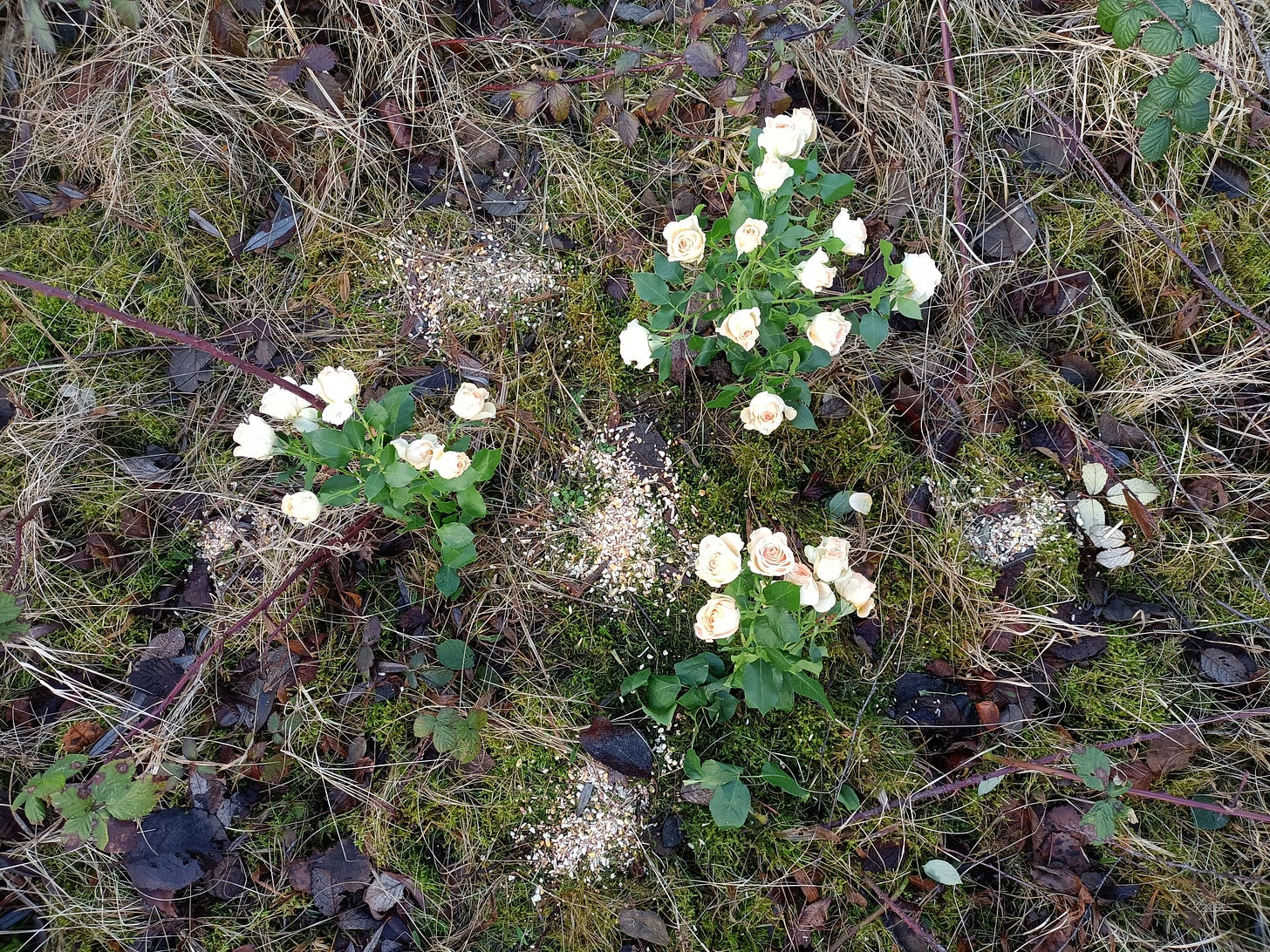
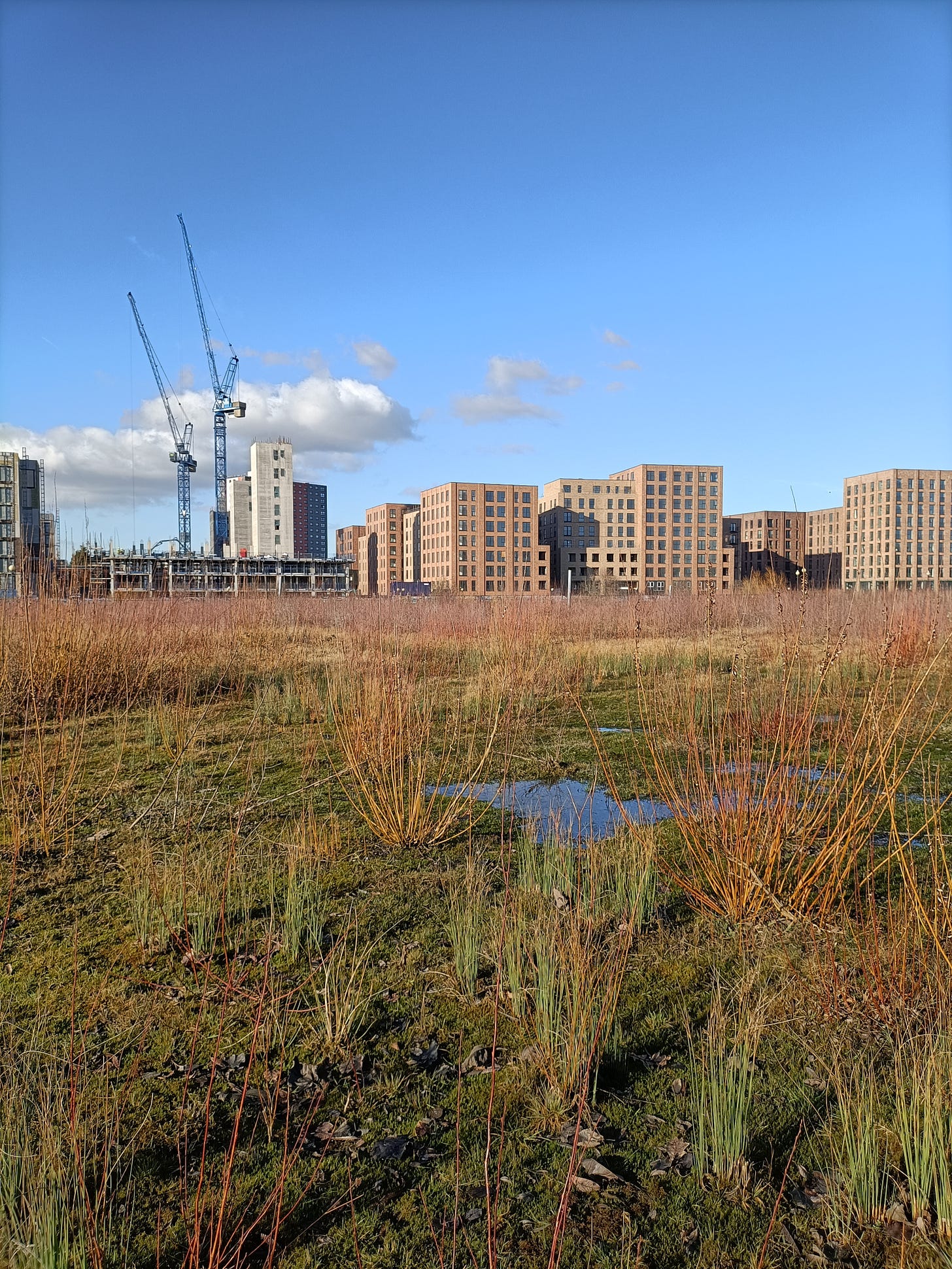
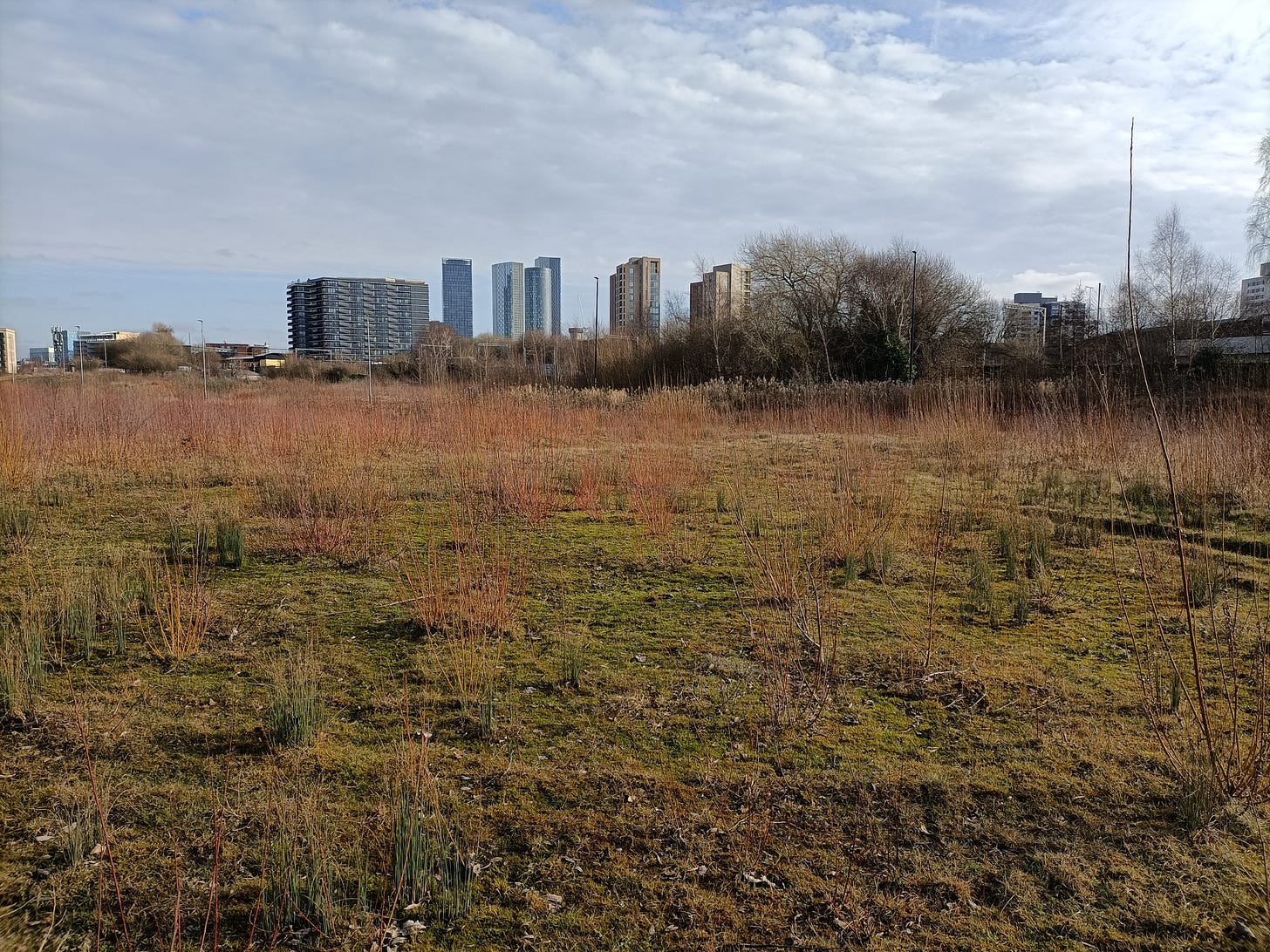
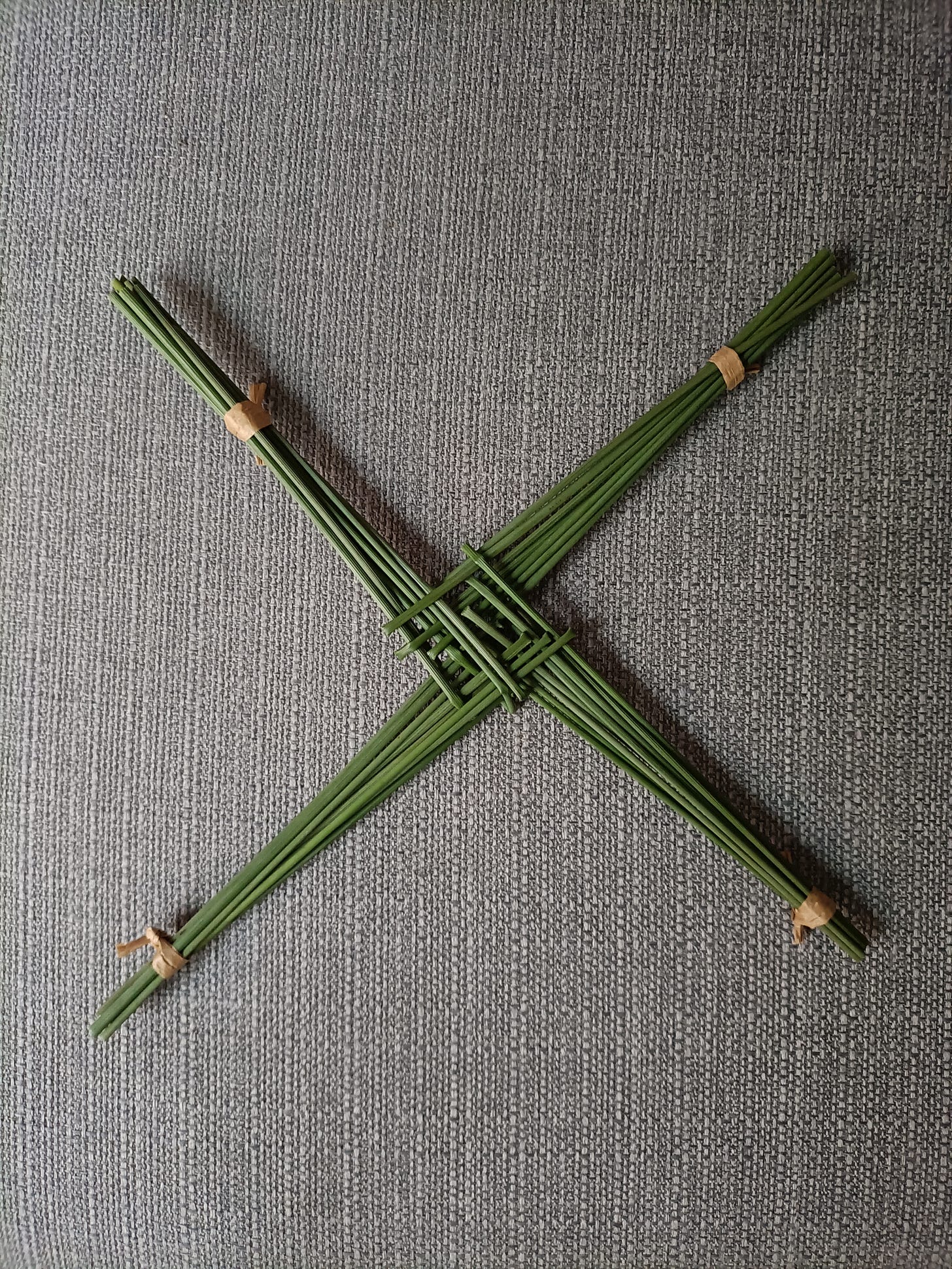
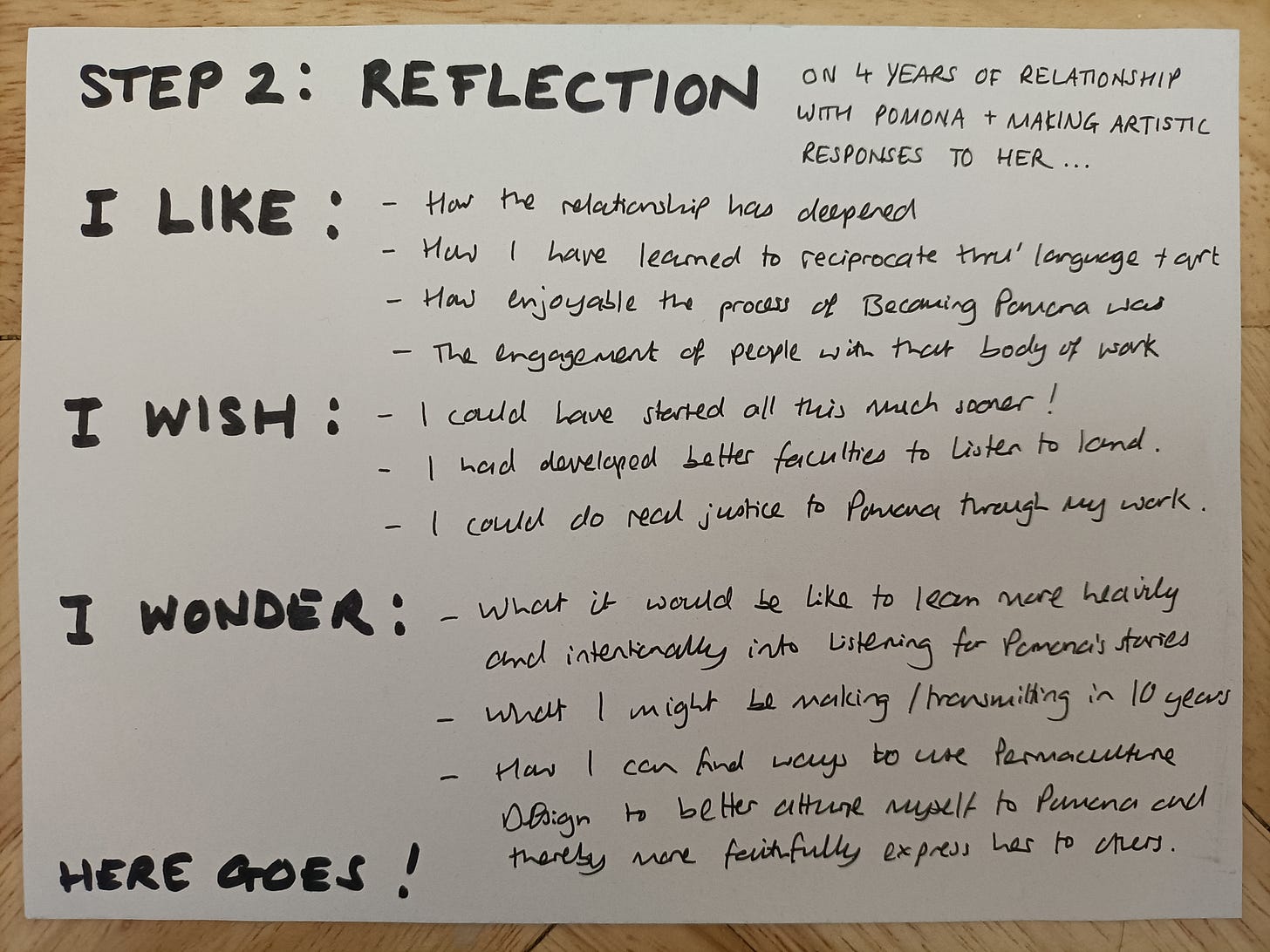
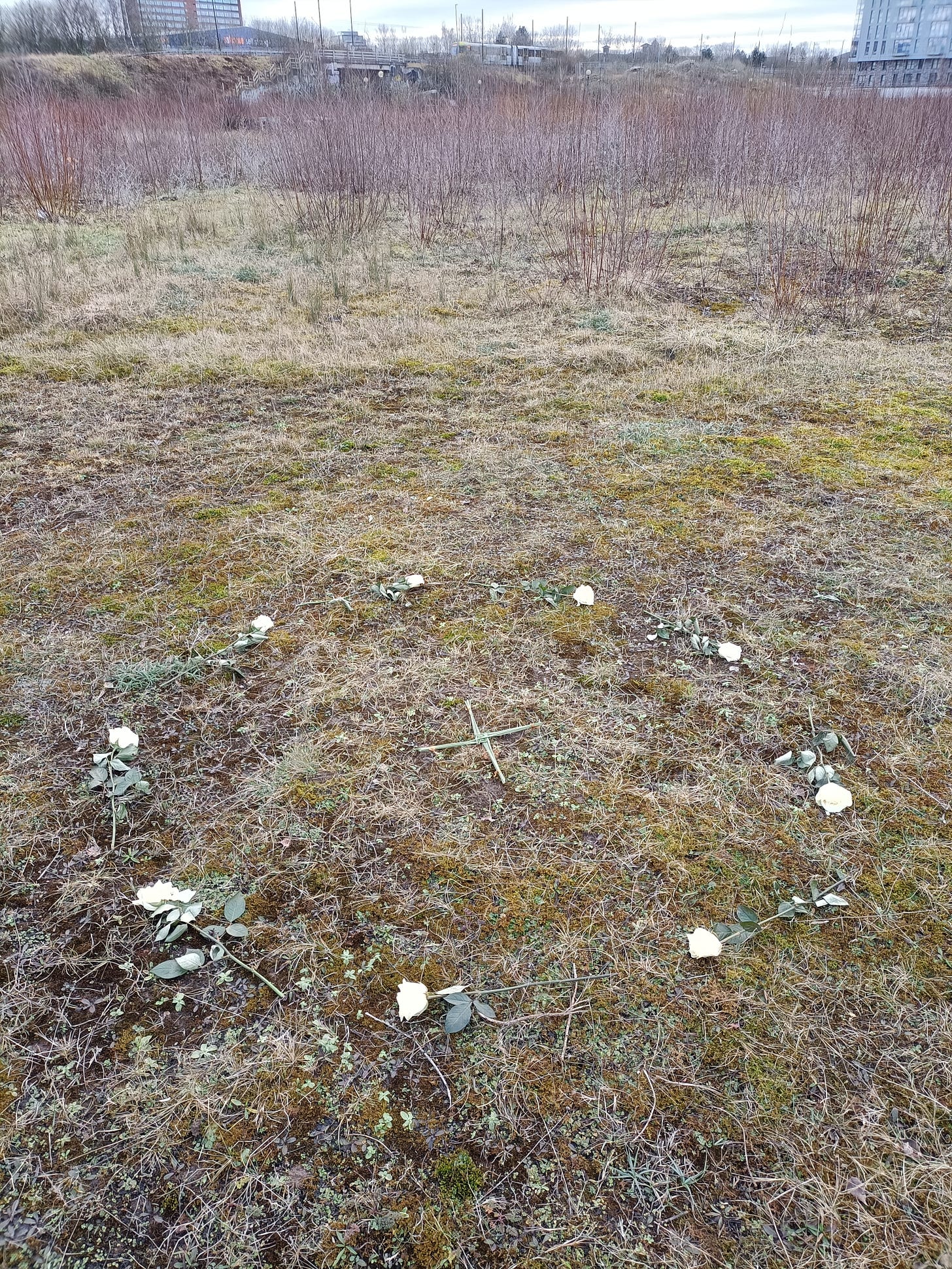
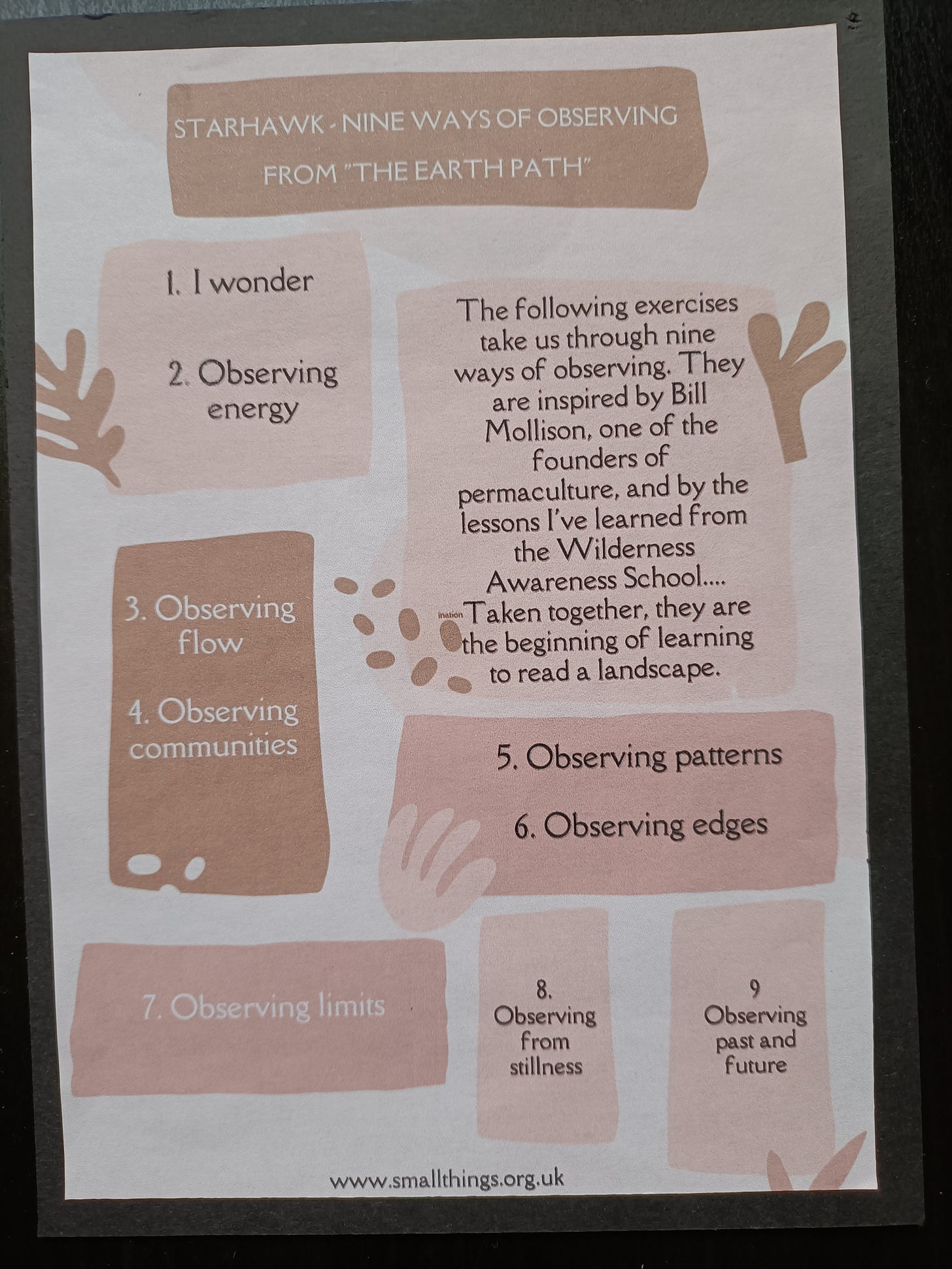
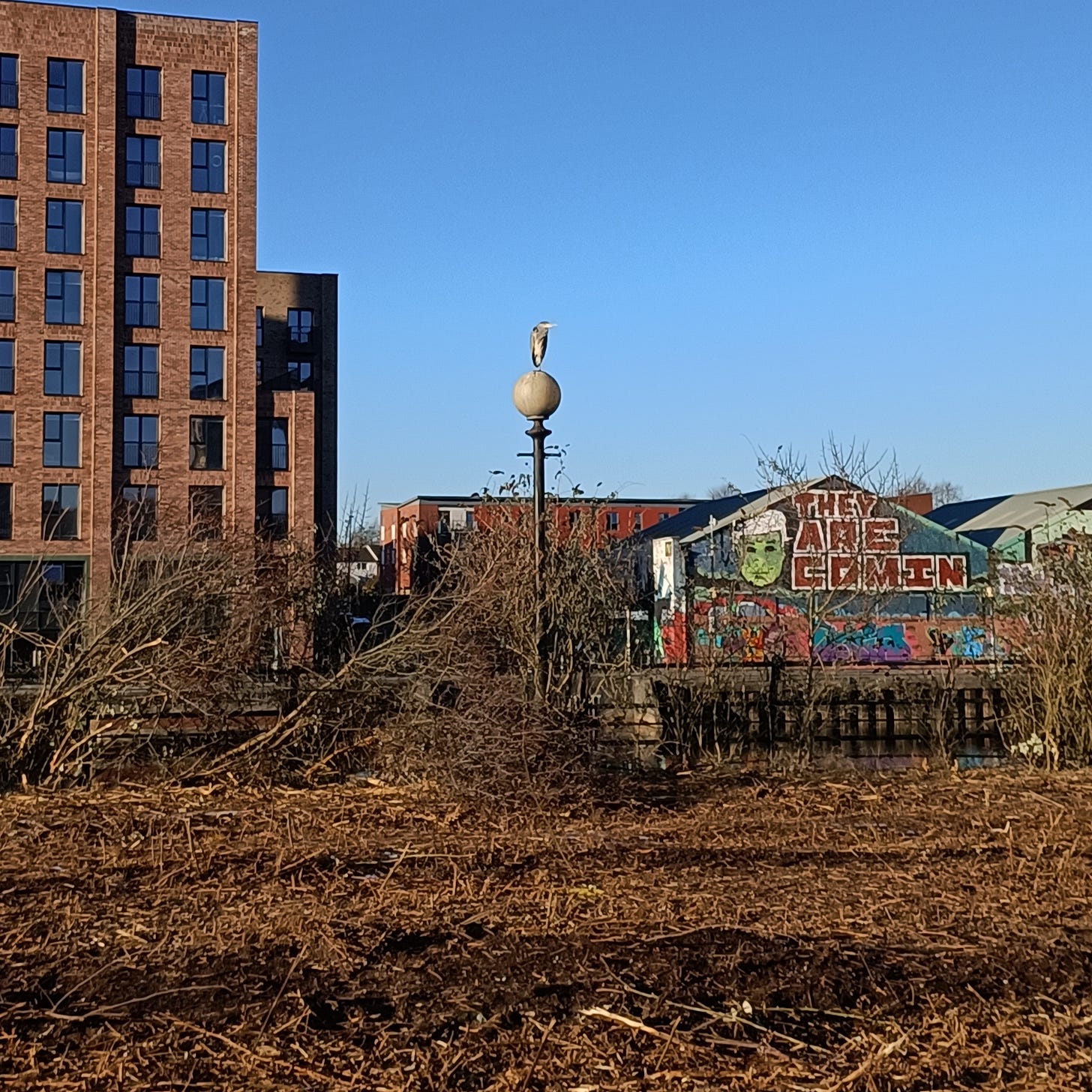
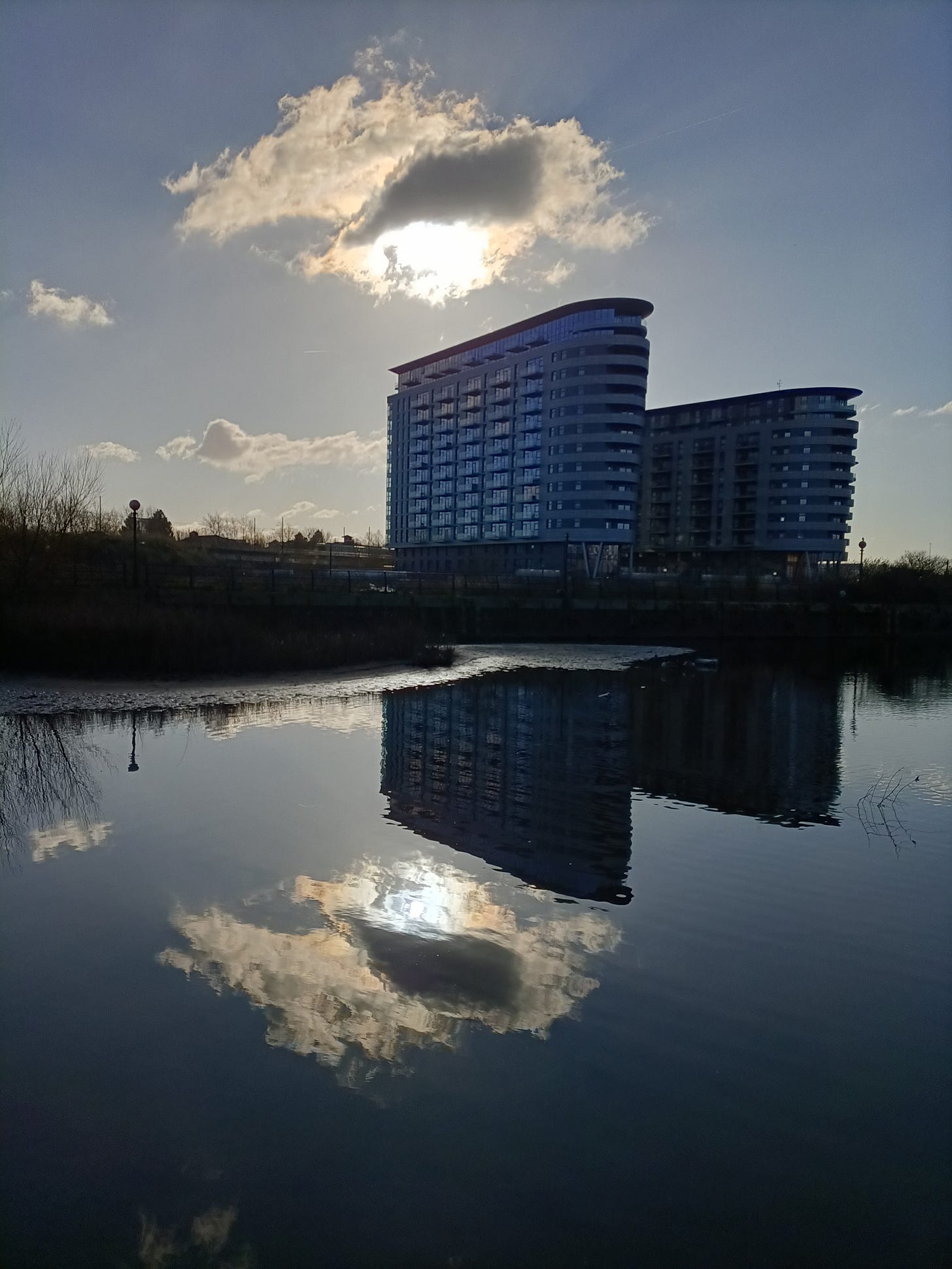
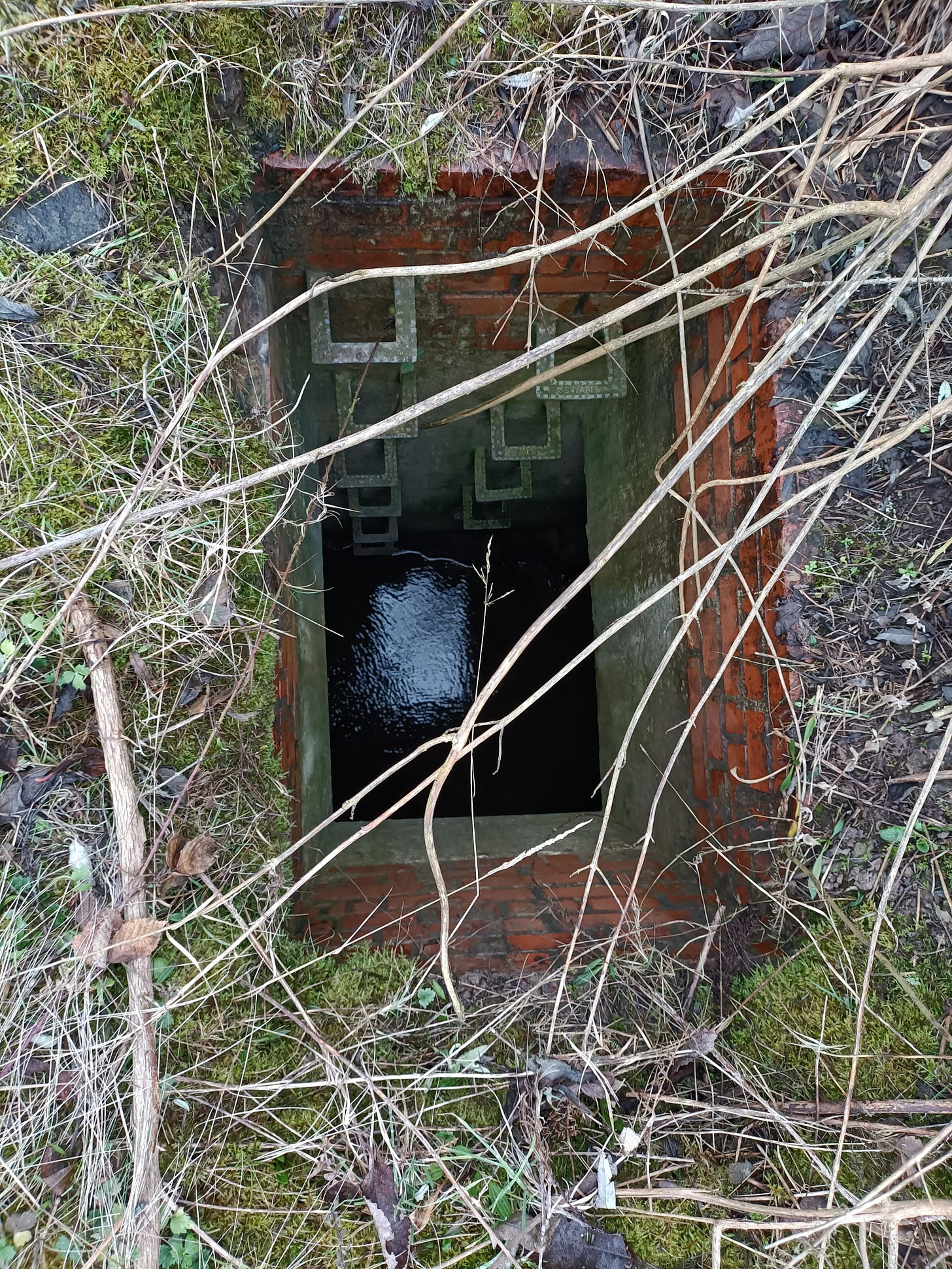
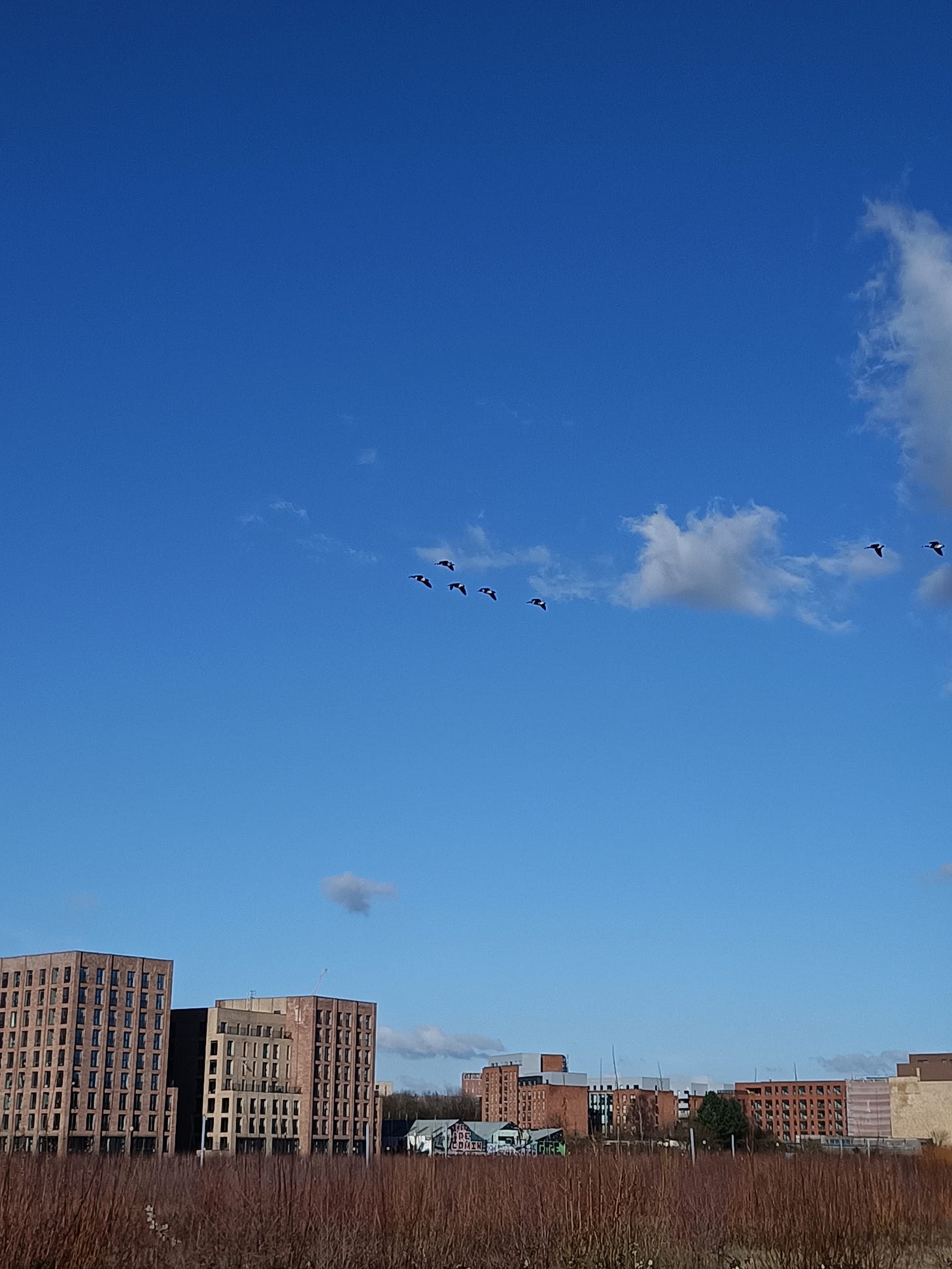
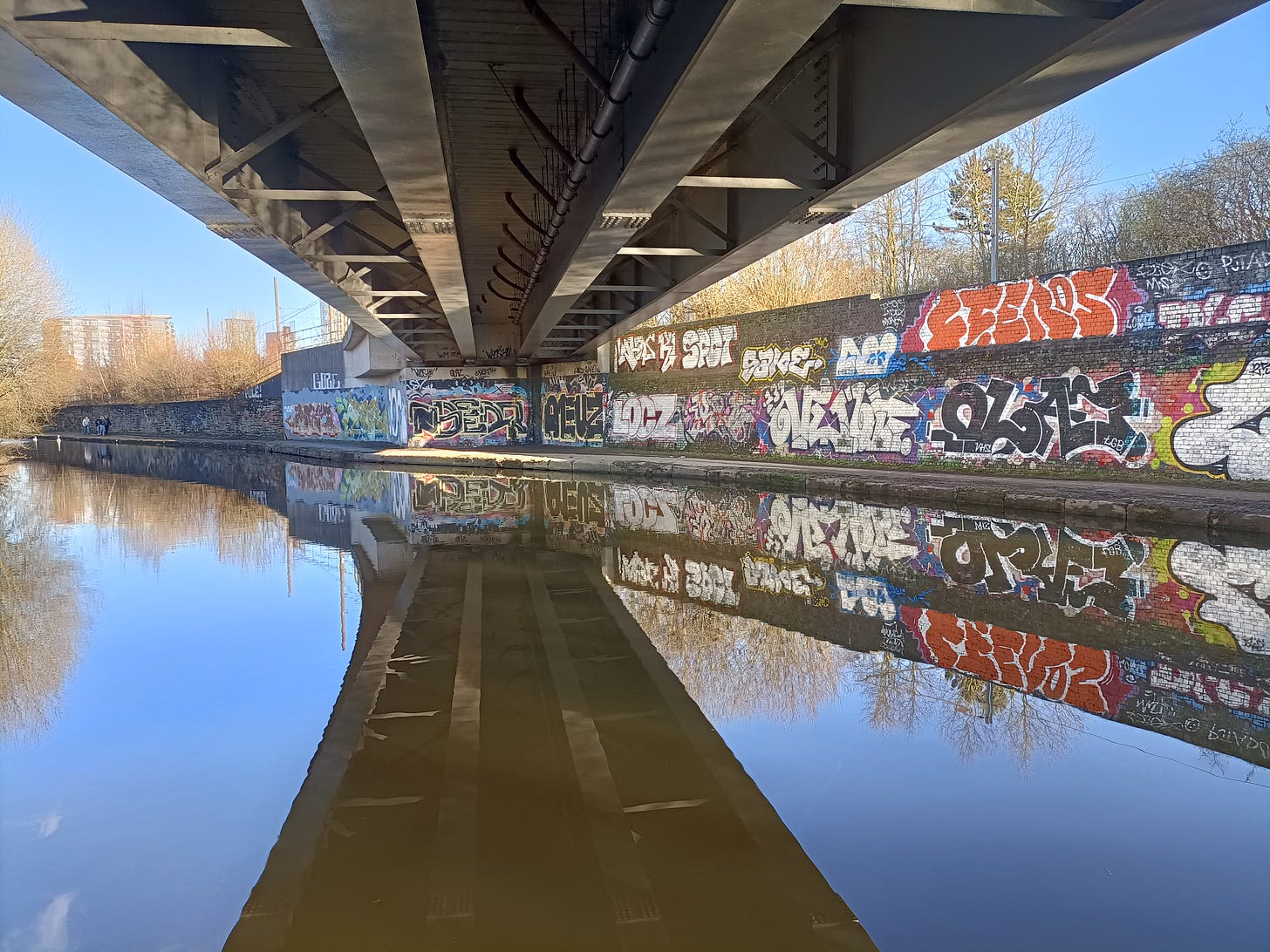
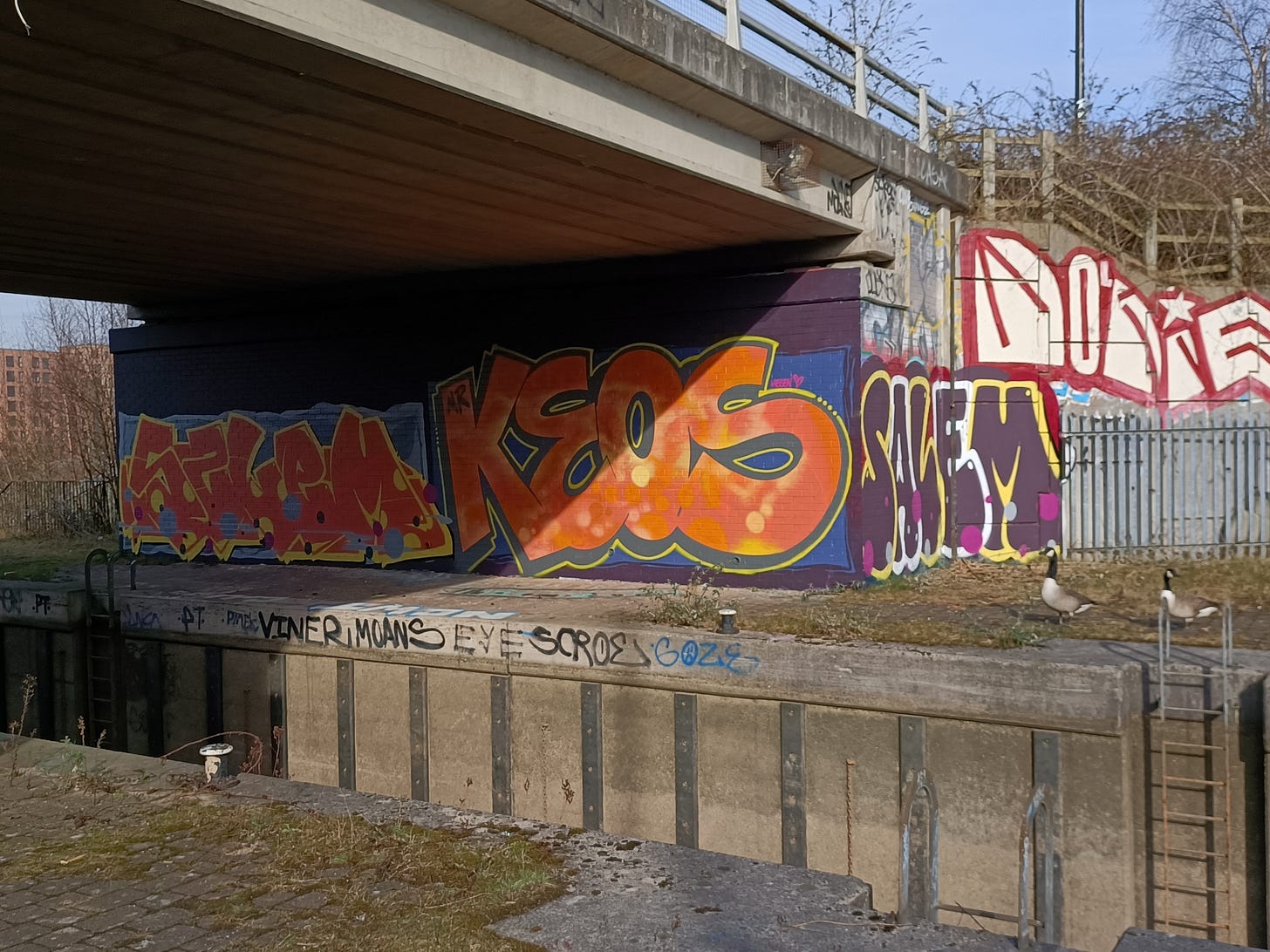









Share this post